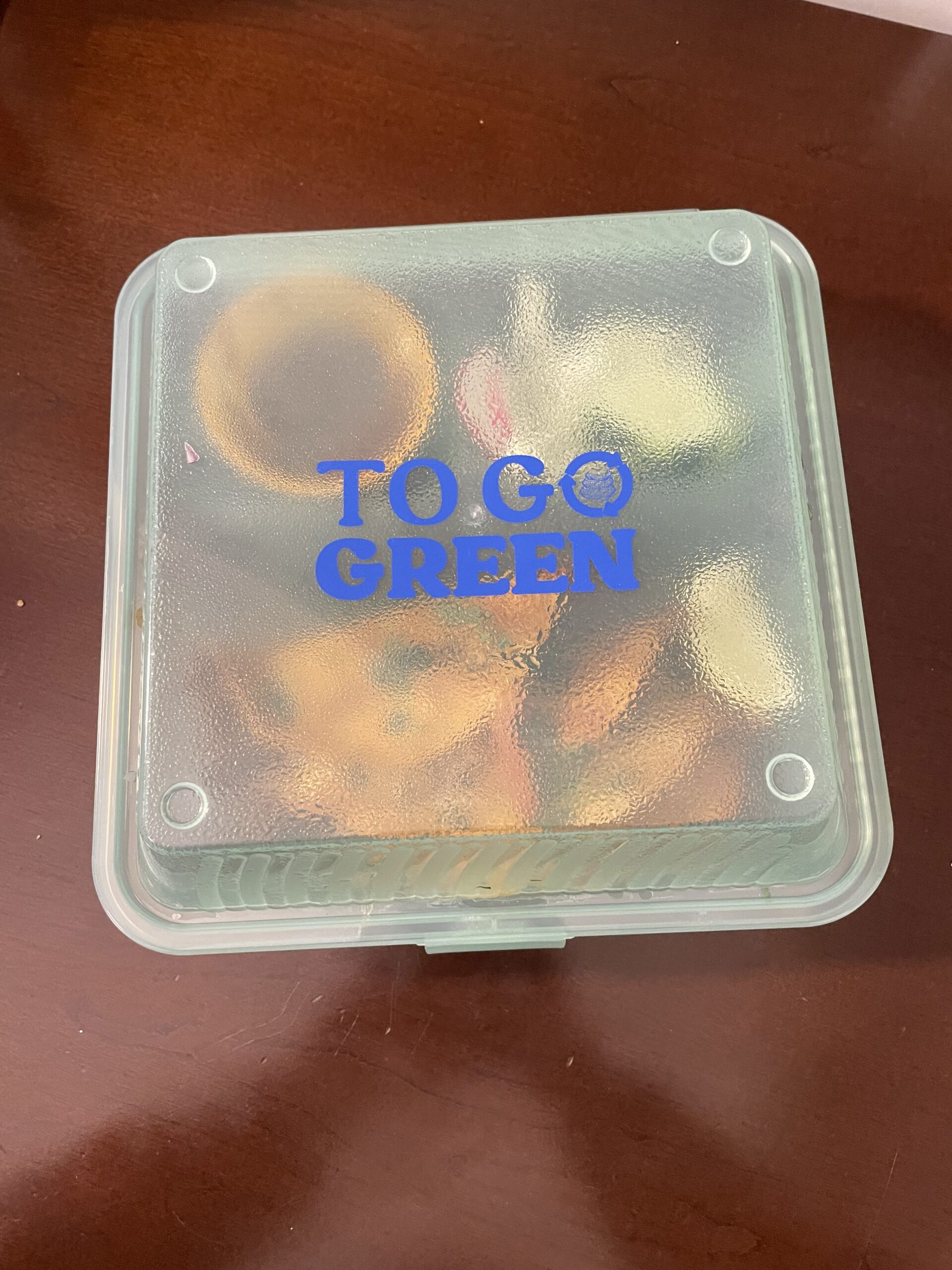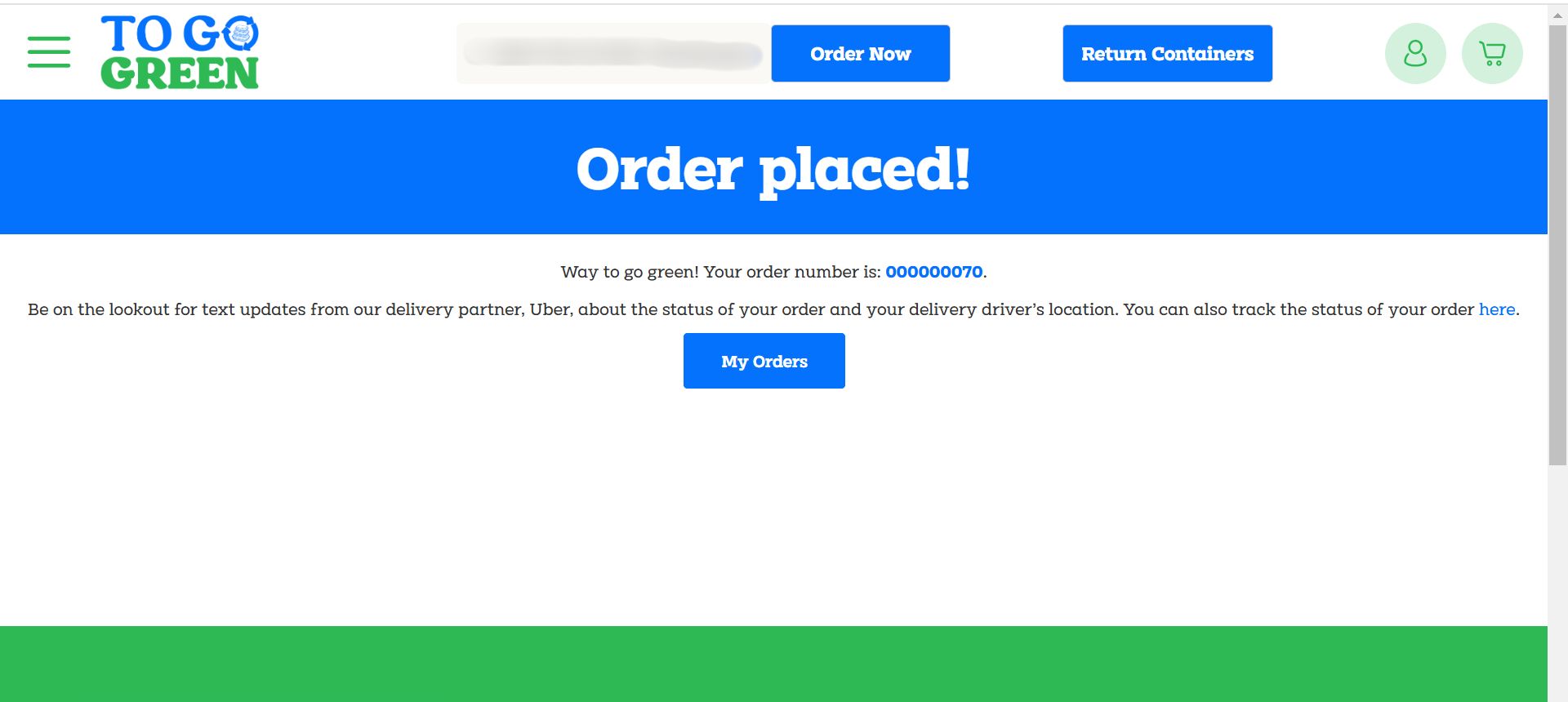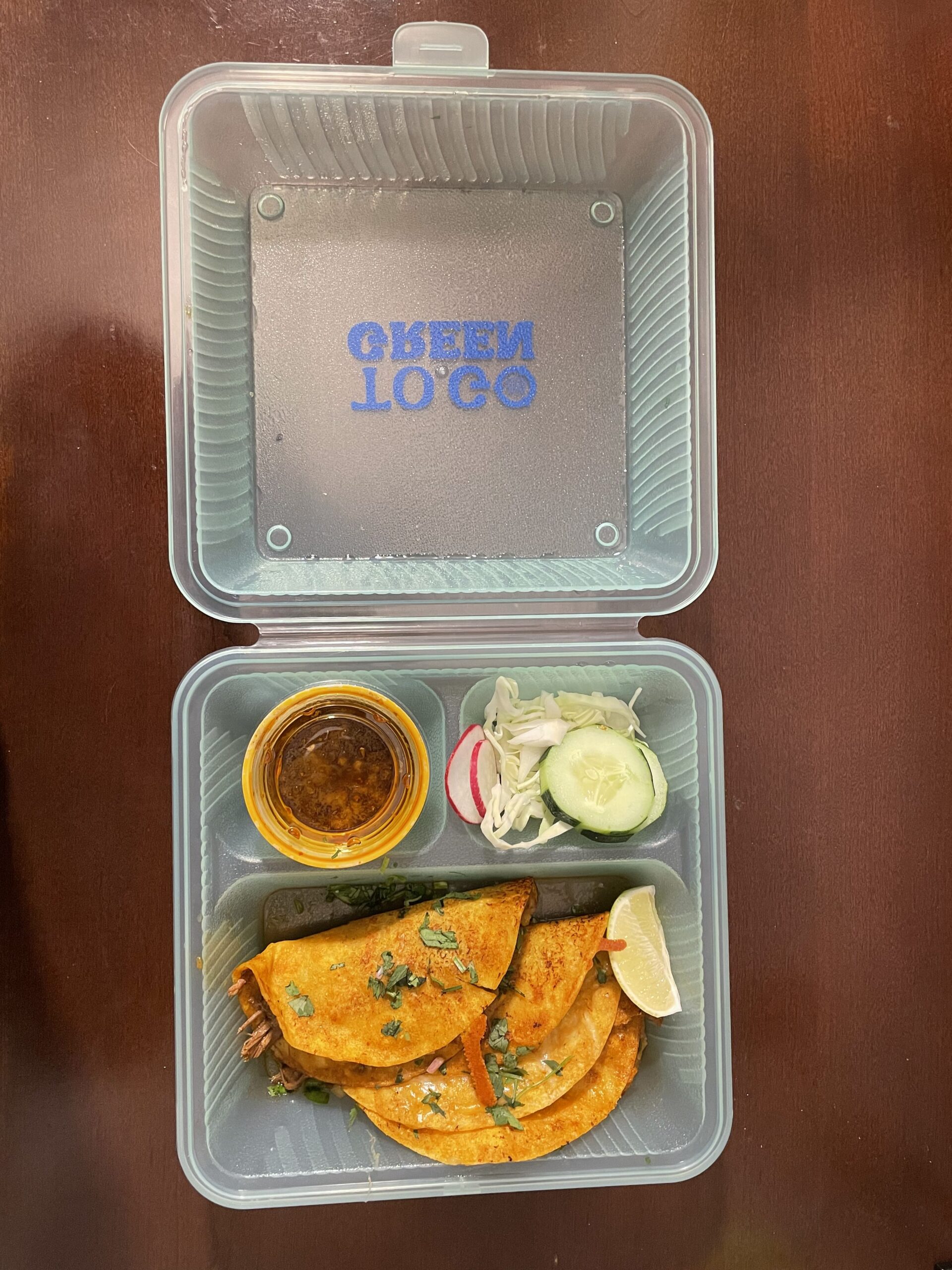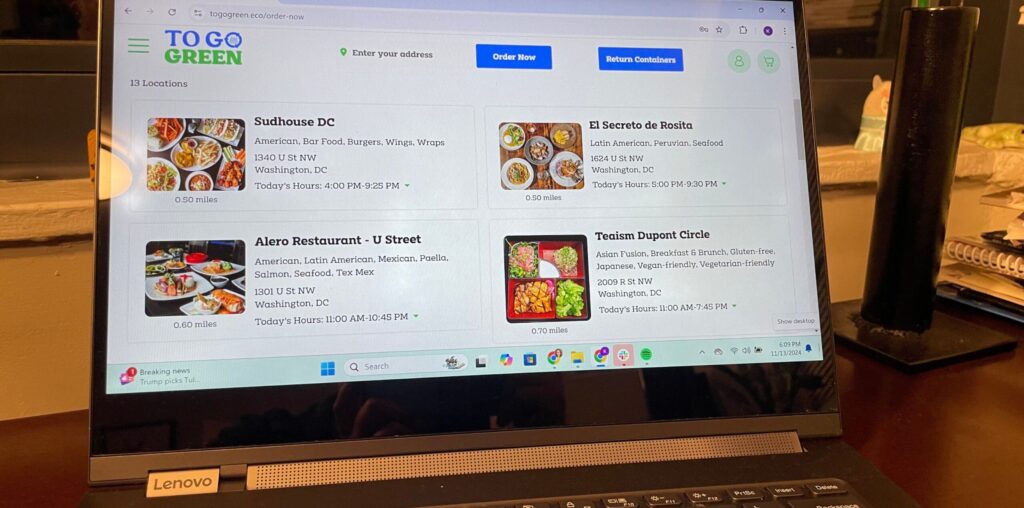Like many people, I ordered takeout pretty frequently during the pandemic’s early days to support restaurants in DC in lieu of going in person.
Kevin and Harrison Kay did the same but also developed an idea for a new startup while ordering in. The two brothers are the founders of To Go Green, a self-proclaimed zero-waste restaurant delivery service that launched in August. Users can order food from a select number of restaurants through the platform, and it’ll be delivered in durable reusable containers that can last more than 1,000 uses. They’re also microwave-safe and BPA-free.
“Our motivation,” Kevin told Technical.ly, “was a frustration that we experienced in our own personal lives from ordering takeout and receiving a lot of single-use packaging that ended up, at best, getting recycled, and at worst, getting thrown in the trash.”
To Go Green is currently working with 13 restaurants, all of which are in Northwest DC. The goal is to keep expanding, and the founders said they are in the process of bringing on others including CHIKO’s Capitol Hill location.
Support from local government, plus proximity to the feds
The founding duo has been working to establish the company since the beginning of 2023. They landed $25,000 through the “Ditch the Disposables” grant from the Chesapeake Bay Trust, DC Department of Energy and Environment and the DC Mayor’s Office.
Kevin and Harrison have always wanted to work together on something, but their nine-year age gap made that difficult. Harrison graduated from high school at the height of the pandemic, while Kevin finished his clerkship after getting his J.D.
Now based in Bethesda, they decided to build this concept in DC because they saw a gap in the market and saw similar models pop up elsewhere, like Reuso in Chicago.

The local government has also demonstrated an interest in sustainability, including through the aforementioned grant. This spring, the mayor initially proposed to cut funding for clean energy and environmental initiatives in the fiscal year 2025 budget, but DC Council members got some funding back. The Department of Energy and the Environment ended with nearly $320 million in the budget, an increase compared to last year’s allocation of almost $218 million.
The proximity to the federal government is also a plus, per Harrison. He hopes policymakers take note of the model — and get inspired.
“If we can get their attention, show them that this is something that customers want, and it’s very feasible for food service operators to adopt,” Harrison told Technicla.ly, “we can begin to turn the cogs in the legislative process.”
Ordering tacos, sustainably
I tested out the platform myself, and it’s pretty intuitive. You choose the restaurant you want to order from (I chose Alero’s Dupont Circle location). You select what you want, then place the order.
When I first tried to place the order, I got a message that ASAP orders were not available at that moment, and only scheduled ones were. But I tried to place the order again, and it worked just fine.

I ordered from a restaurant pretty close to where I live (most of the participating restaurants so far are coincidentally in my neighborhood). To Go Green uses an integration with Uber to have couriers make the deliveries, mainly because the startup isn’t prepared to bring on its own delivery staff, Kevin said.
I got birria tacos from Alero, and they arrived in about 45 minutes. When the order came, it was still very warm; it traveled less than a mile, but the courier was on a bike during a cold DC night.
There was a single-use plastic utensil, for the Birria consomé, placed in the reusable container. The founders said they chose to begin the process with containers that have the greatest environmental impact and are less likely to be lost, but noted they want to develop these smaller containers in the future.

Users then have three weeks to return the container and don’t need to clean it. You can either drop it off at any participating restaurant or get an Uber courier to pick it up from your house and drop it off at such a location.
I chose to drop it off myself because scheduling that sort of pick-up service in my apartment building can be tricky. I left it with the host, and that was it.
How it works on the restaurant side
Each restaurant is personally pitched and onboarded by the brothers. They’ll go in and show off the containers to owners or managers, explaining the environmental benefits and the straightforward process.
The restaurants receive To Go Green orders through a separate tablet and app provided by the startup, like a traditional DoorDash or Uber Eats order.
“It’s really just as easy for them as using any other online ordering service, except they’re not creating all the waste,” Harrison told Technical.ly.
It’s been difficult to sign on restaurants, mostly because managers or owners are not consistently on site. There’s been a lot of back and forth, and often have to repeatedly follow up via phone or email to get the process going, Kevin said.
Once a restaurant is onboarded, To Go Green charges 12 cents per use of the containers. They also run a lower commission than other delivery services, which the founders do as an extra incentive to partner with the startup. Restaurants are charged a 5% commission for pickup orders and a 10% commission for deliveries.
It’s on the restaurant to clean the containers, which is why the charge is only 12 cents, the founders explained. Kevin described plans to create a central hub to clean the containers, so the responsibility isn’t on the restaurant.
Overall, the system is more complex than the average food delivery platform because of those various moving parts: making sure the restaurant is paid its appropriate commission, and that To Go Green also gets the correct commission and container fee, Kevin explained.
Container returns are also tracked. I dropped my container off at Alero on Friday, but as of Monday, the site still lists that I owe two containers (but I only received one).

Hopes for direct integration with delivery apps
The brothers have big goals for the future, including making the containers more widely available.
“Rather than having to visit our online ordering platform and order in reusable containers through us, customers could visit DoorDash or GrubHub or Uber Eats, or some of the ones that they’re already familiar with,” Kevin said, “and then simply select To Go Green reusable containers as a menu option.”
They still see themselves working directly with restaurants in the future, and to be embedded in point-of-sale systems that can streamline container use.
Kevin and Harrison have not yet brought on investors but noted they will need more capital to scale To Go Green. They hope that expanding will prove the concept.
“Sustainability isn’t some sort of buzzword,” Harrison said. “It really is a movement, and people are committed to making real change, and if we provide a convenient system for them to opt into to do that, then people will buy into the system.”

